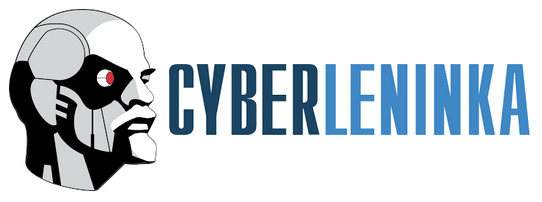DYNAMIC AND STRUCTURAL ANALYSIS OF THE INNOVATION FIELD OF THE INDUSTRIAL COMPLEX OF RUSSIA
Abstract
Innovation is a key prerequisite for economic growth both at the level of individual economic entities and at the national analysis level. The article considers the innovation space of Russian industrial complex through the prism of dynamic-structural analysis. The purpose of the article is to study the dynamics and structure of Russian organizations’ innovation activity in the context of types of innovation activities and the territorial structure of the economy, to determine the main directions of its increase. It is revealed that despite the fact that the costs of innovation activity in the Russian Federation as a whole in 2014-2020 increased by more than 76% and amounted to 2.314 billion rubles, their distribution by regions (federal districts) is extremely uneven and the results are not high: the regional differentiation of innovation activity is counted in times and even tens of times; the share of innovation activity expenditures and the share of innovative products in total volume of shipped products have low values, and their negative trend is noted. The share of organizational and managerial innovations providing materialization of technical discoveries, their support, implementation and commercialization in the total volume of expenditures is only 0.2%. Positions of Russia in international innovative ratings are not high and have deteriorated during the period under study on a number of calculation criteria. It seems that the solution of the problem lies in the priority target financing of innovative entrepreneurship, new business models, venture ecosystem, import-substituting innovative industries, development of tax, customs, economic legislation mechanisms within the state program of innovative development. It is necessary to work out united priority directions of scientific, scientific-technical and innovational activity in doctrinal and law-enforcement plan on the state level.
Keywords
high-tech economy, innovation, innovation activity, knowledge-intensive production, organizational and managerial management, industrial complex of Russia
References
Lundvall B.-A. National systems of innovation: Towards a theory of innovation and interactive learning. London: Pinter Publishers, 1992. 342 p.
Glazyev S.Yu. Strategiya operezhayushchego razvitiya Rossii v usloviyah global'nogo krizisa [Strategy of advanced development of Russia in the context of the global crisis]: monograph. Moscow: Economics. 2010. 255 p. (In Russ.).
Amara R. New directions for innovation // Futures. 1990. Vol. 22. Pp. 142-152.
Doroshenko Y.A., Starikova M.S., Riapukhina V.N. Models of regional development in Russia: Level of industrialisation and innovative performance // Engineering Economics. 2021. Vol. 32(3). Pp. 247-257. DOI: 10.5755/j01.ee.32.3.25897
Usoskin V.M. COVID-19 pandemic: world central banks’ reaction to economic downturn // World Economy and International Relations. 2021. Vol. 65(2). Pp. 53-61. (In Russ.). DOI: 10.20542/0131-2227-2021-65-2-53-61
Rovinskaya T.L. The role of new digital technologies in a time of crisis // World Economy and International Relations. 2021. Vol. 65(6). Pp. 95-106. (In Russ.). DOI: 10.20542/0131-2227-2021-65-6-95-106
Nechaev A.V. Priorities of neoindustrialization of Russia // World Economy and International Relations. 2020. Vol. 64(2). Pp. 71-79. (In Russ.). DOI: 10.20542/0131-2227-2020-64-2-71-79
Science. Innovation. Technologies (2022). Federal State Statistics Service. (In Russ.). URL: https://rosstat.gov.ru/folder/154849 (accessed on 06.02.2022).
Global Innovation Index (2014-2020). WIPO. URL: https://www.wipo.int/global_innovation_index/en/ (accessed on 08.02.2022).
The Bloomberg Innovation Index (2016-2020). Bloomberg. URL: https://www.bloomberg.com/graphics/innovative-countries/ (accessed on 08.02.2022).
Global Competitiveness Index (2014-2019). World Economic Forum. URL: https://weforum.org/ (accessed on 08.02.2022).
Doing Business (2014-2019). The World Bank Group. URL: https://www.worldbank.org/en/programs/business-enabling-environment (accessed on 08.02.2022).
Stornelli A., Ozcan S., Simms C. Advanced manufacturing technology adoption and innovation: A systematic literature review on barriers, enablers, and innovation types // Research Policy. 2021. Vol. 50(6). P. 104229. DOI: 10.1016/j.respol.2021.104229
Nevzorova T. Functional analysis of technological innovation system with inclusion of sectoral and spatial perspectives: The case of the biogas industry in Russia // Environmental Innovation and Societal Transitions. 2022. Vol. 42. Pp. 232-250. DOI: 10.1016/j.eist.2022.01.005
Filin S.A., Yakushev A.Zh. Organizational and managerial innovations as the cornerstone of the digital economy // National Interests: Priorities and Security. 2018. Vol. 14(7-364). Pp. 1319-1322. (In Russ.). DOI: 10.24891/ni.14.7.1319
Zotov V.M., Abdikeev N.M. New Technologies for Managing Industrial Innovation Funding // Finance: Theory and Practice. 2021. Vol. 25(6). Pp. 112-127. (In Russ.). DOI: 10.26794/2587-5671-2021-25-6-112-127
About the Author
Stanislav R. Turkovsky – Student in the Master’s programme, PLEKHANOV Russian Economic University, Moscow, Russia. E-mail: turkovskiist@gmail.com. SPIN РИНЦ 6702-6248. ORСID 0000-0003-2741-5751
For citation
Turkovsky S.R. Dynamic and Structural Analysis of the Innovation Field of the Industrial Complex of Russia // BENEFICIUM. 2022. Vol. 1(42). Pp. 59-67. (In Russ.). DOI: 10.34680/BENEFICIUM.2022.1(42).59-67









